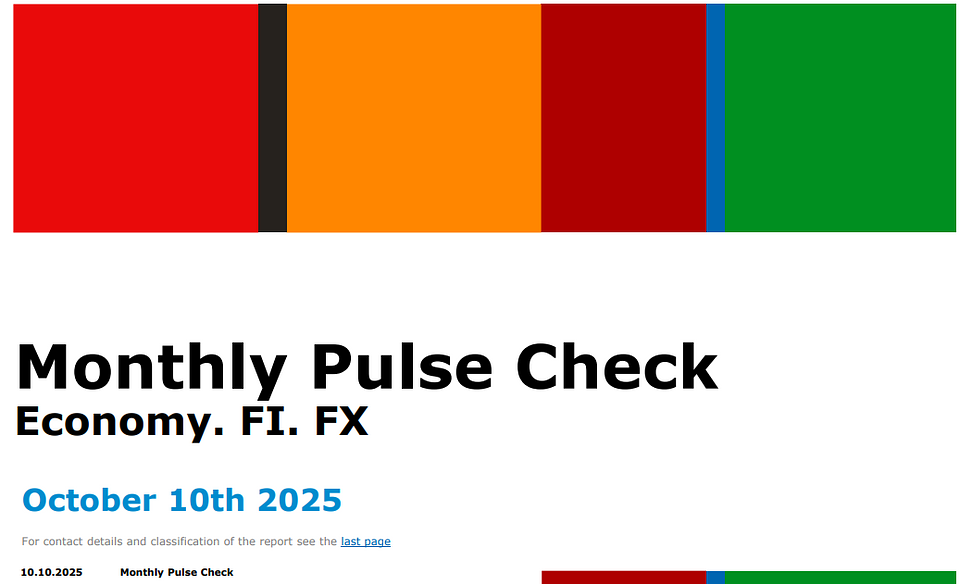Key forecasts:
US: The economy is expected to grow at a stable pace in the coming quarters (c. 2%) despite a weakening labor market and temporary disruptions related to the government shutdown. According to the Atlanta Fed’s model, consumer spending remains a reliable driver of growth in the second half of the year, with business investment also continuing to support the expansion. The negative impact of tariffs is likely to become more visible toward the end of the year
Eurozone: We remain relatively optimistic about the EU’s economic outlook and expect that growth could be sustained at around 1.5% in the second half of the year. The main supporting factor is the improvement in sentiment in Germany, as reflected in Ifo surveys and investment activity. However, consumer demand remains uncertain.
Poland: The Polish central bank (NBP) cut rates by 25bps, which took the reference rate to 4.5%. The statement did not point to any further moves in the nearest future. During the press conference, Governor Glapiński adopted a hawkish stance, emphasising the upside risks to inflation arising from elevated core prices and wage growth, the unfreezing of electricity prices for households, the introduction of ETS2 from 2027 onwards, and the current lax fiscal policy. That said, we remain cautious regarding further cuts and anticipate only two additional moves before reaching the terminal rate of 4%.
Główne prognozy:
USA: Spodziewamy się , że gospodarka będzie rosła w stabilnym tempie w kolejnych kwartałach (ok. 2%), pomimo pogarszającej się sytuacji na rynku pracy oraz krótkotrwałych zakłóceń związanych z zamknięciem rządu. Zgodnie z modelem Atlanta Fed, wydatki konsumenckie pozostają solidnym motorem wzrostu w drugiej połowie roku, a inwestycje biznesowe nadal wspierają ekspansję. Negatywny wpływ ceł prawdopodobnie stanie się bardziej widoczny pod koniec roku.
Strefa euro: Pozostajemy stosunkowo optymistyczni co do perspektyw gospodarczych UE i spodziewamy się, że w drugiej połowie roku możliwe będzie utrzymanie tempa wzrostu na poziomie około 1,5%. Głównym czynnikiem wspierającym jest poprawa nastrojów w Niemczech, widoczna m.in. w badaniach Ifo oraz w aktywności inwestycyjnej. Niepewność wciąż dotyczy popytu konsumenckiego.
Polska: Narodowy Bank Polski obniżył stopy procentowe o 25 pb, sprowadzając stopę referencyjną do poziomu 4,5%. W komunikacie nie wskazano na możliwość dalszych ruchów w najbliższym czasie. Podczas konferencji prasowej prezes Glapiński przyjął jastrzębią retorykę, podkreślając ryzyka dla inflacji wynikające z wysokich cen bazowych i wzrostu płac, odmrożenia cen energii elektrycznej dla gospodarstw domowych, wdrożenia systemu ETS2 od 2027 roku oraz obecnie luźnej polityki fiskalnej. Mimo to pozostajemy ostrożni w ocenie dalszych obniżek i zakładamy jedynie dwa dodatkowe ruchy przed osiągnięciem stopy docelowej na poziomie 4%.

